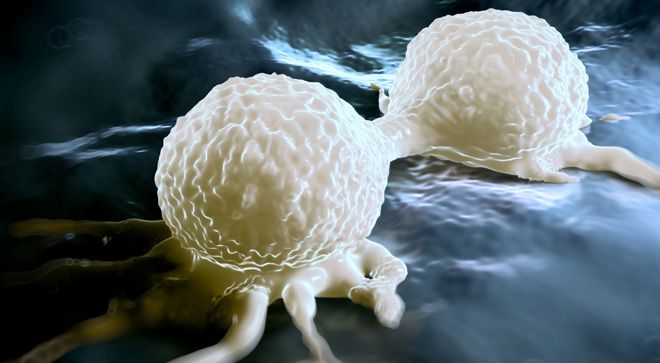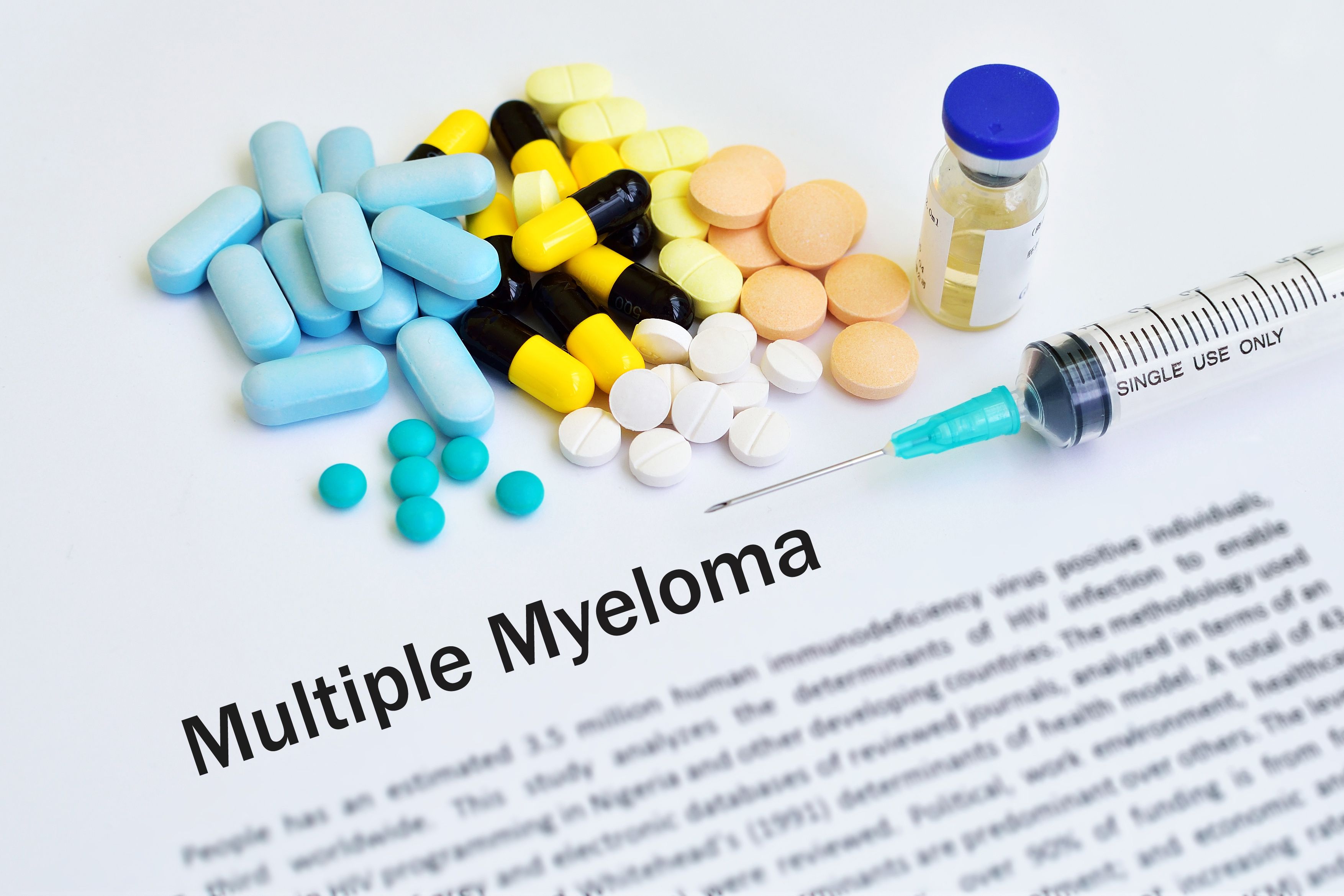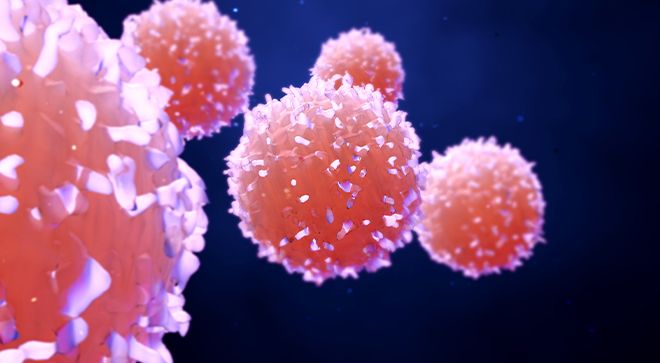Article
Chronic Opioid Use After Stem Cell Transplant May Affect Myeloma Outcomes
Author(s):
Patients who used opioids long-term after undergoing an autologous stem cell transplant tended to have poorer survival outcomes, recent research showed.
Chronic opioid use tended to decrease survival outcomes in patients with multiple myeloma who underwent an autologous stem cell transplant (ASCT), a procedure where a person’s healthy blood or stem cells is used to replaced damaged bone marrow, according to recent research presented at the 2023 Transplantation & Cellular Therapy Meetings.
“These data highlight the need to improve the understanding and management of pain in multiple myeloma and try and differentiate between cancer-related pain and chronic pain that can, perhaps, respond to other measures,” Dr. Ana Maria Avila, a hematology/oncology fellow at University of Illinois at Chicago, said during a presentation of the study.
Previous illicit drug use was a strong predictor of baseline chronic opioid use; meanwhile, use of known opioid analgesics (strong opioids used in the medical setting, such as oxycodone, morphine and others), or being employed were associated with a lower likelihood of chronic baseline opioid use.
Interestingly, bone tumors and fractures were not associated with baseline chronic opioid use.
Research showed that 41.4% of patients with myeloma experienced chronic opioid use after undergoing a stem cell transplant.

At ASCT discharge, median morphine milligram milliequivalent (MME) was approximately 30 mg per day, which was highest in the peri- and post-transplant setting, according to Avila. She added that, of the 80% of patients who received opioids during transplant, 60.3% were discharged on opioids. The documented reasons for being discharged on opioids were musculoskeletal (45.8%), generalized (19.3%), neuropathic (15.0%), mucositis-induced (14.5%) and headache (7.2%) pain.
Of the 36.6% of patients who became new opioid users at discharge, 15.9% were reported to chronically use opioids at six months after ASCT. Overall, chronic opioid use was observed in 41.4% of patients (72 patients), at an average of 47.5 mg per day and median of 20 mg per day, at six months post ASCT.
Opioid use at discharge was associated with chronic opioid use at six months; however, disease burden was not associated.
Chronic Opioid Use May Affect Survival
Following ASCT, chronic opioid use at six months compared no use among patients in remission led to median progression-free survival (time from treatment until disease worsens) of 39 months compared to 45 months, respectively, though this difference was not significant.

Average overall survival (time from treatment until death of any cause) was 48 months for those with chronic opioid use and then not reached for the no opioid use group, because a high percentage of patients were still alive. When adjusted for established prognostic characteristics, chronic opioid use predicted worse overall survival in patients in remission following ASCT.
Avila noted that bone pain is one of the most common symptoms associated with a multiple myeloma diagnosis, while skeletal-related events (SREs) can occur in 22% to 34%, leading to reduced quality of life, increased pain and decreased survival.
“So opioids are critical as an adjunctive treatment for bone pain,” she explained. “However, overuse has been associated with a significant public health crisis. Despite this, opioid use patterns have not been widely studied in this patient population.”
With prolonged periods of remission and improved survival following ASCT with maintenance therapy, the investigators aimed to describe chronic opioid use and its impact on long term outcomes among a cohort of patients who underwent ASCT at the University of Illinois.
The study included 174 patients aged 18 years or older who were diagnosed with multiple myeloma and underwent ASCT between January 2005 and December 2019. Information was collected from visits prior to transplant, during transplant admission, upon discharge, and at the six- and 12-month follow-up visits after transplant.
The investigators evaluated predictors —including insurance type, educational level, employment status, alcohol use, illicit drug use and non-opioid analgesic use — of chronic opioid use (defined as an active prescription for three consecutive months) at baseline and six months post ASCT; overall survival and progression-free survival at six months post ASCT in patients in remission; and prognostic factors to identify predictors of overall survival.
Among treatment-related characteristics at baseline, 83% received a proteasome inhibitor, an immunomodulatory agent, or an anti-CD38 monoclonal antibody. Further, 71% of patients received post-transplant maintenance therapy.
Among 174 patients, chronic opioid use was observed in 92 (52.9%) at baseline, including 27 (29.3%) who had no prior history of bone disease. The baseline MME was 65.3 mg per day. Of note, 20 mg or more per day correlates with a risk for overdose events, Avila said.
Avila noted that the study was limited by its single-center, retrospective analysis design, “so findings might not be generalizable.”
Additionally, she said there was no correlation with the Illinois Monitoring Prescription Program, which could have accounted for additional opioid prescriptions.
However, Avila highlighted the study’s strengths, including “the description of opioid use patterns in a myeloma population that is ethnically diverse and is usually underrepresented in myeloma studies; and, in particular, would describe opioid use patterns in long-term survivors.”
Looking Ahead
Avila concluded that next steps should include the identification of potential barriers to opioid discontinuation in larger, collaborative databases, and the validation of clinical opioid predictive tools in the peri-transplant setting. “And hopefully [we] have larger prospective trials evaluating alternative opioid-sparing strategies in patients with myeloma in the peri- and post-transplant setting,” she concluded.
For more news on cancer updates, research and education, don’t forget to subscribe to CURE®’s newsletters here.




